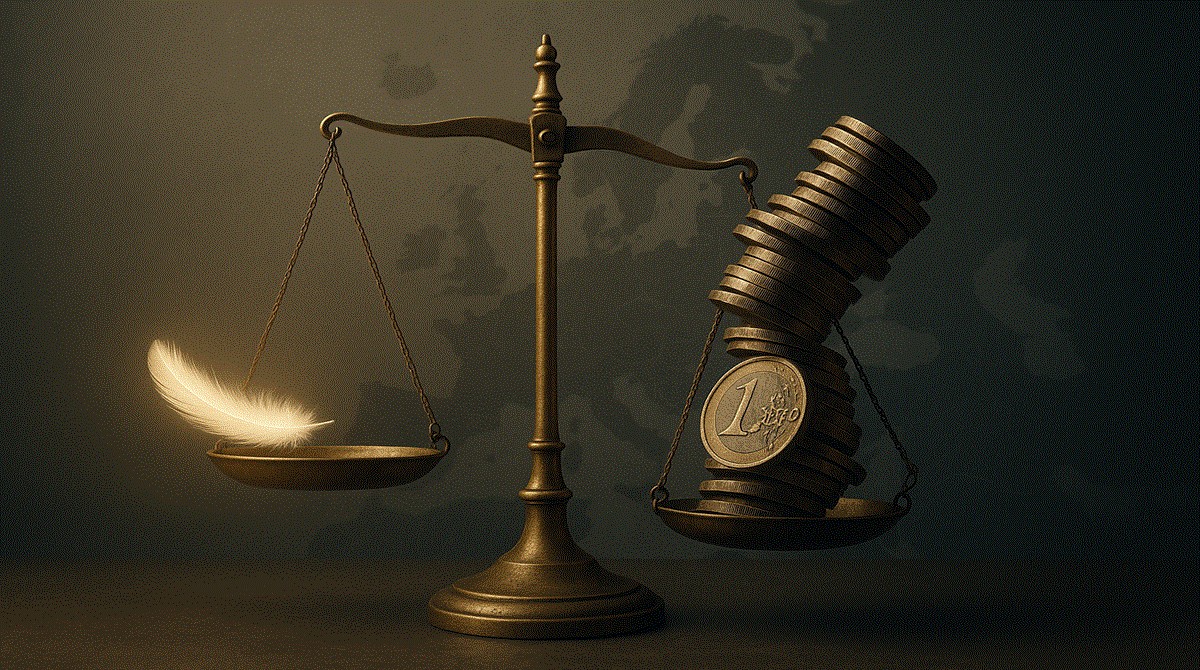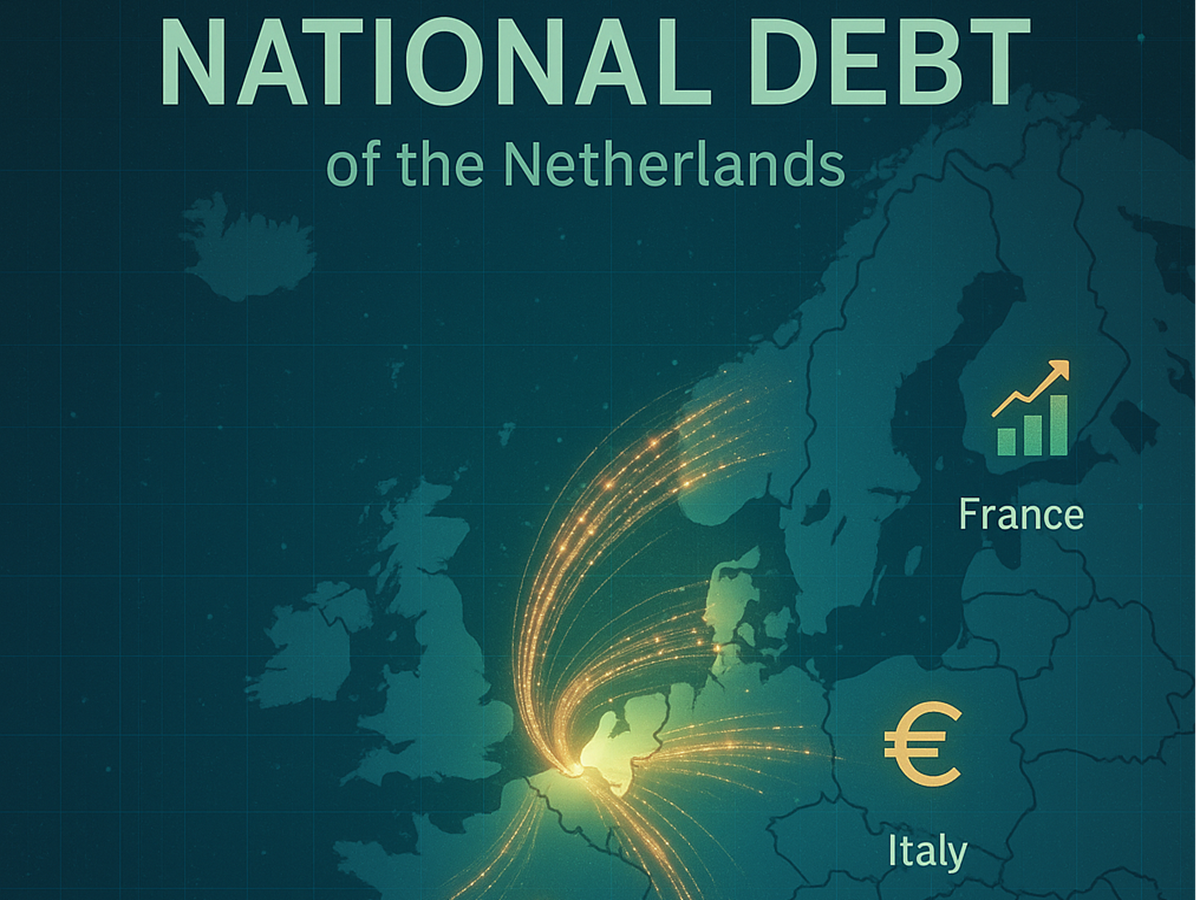The End of Free Money: Europe’s Silent Debt Crisis
As interest rates rise, governments face a new reality. The question is no longer if debt becomes a problem, but when.

Subtitle: As borrowing costs climb, European governments are forced to confront a new reality. The question is no longer whether debt is a problem, but when.
For the first time in over a decade, money has a price again — and that price is now painfully visible in the budget offices of Rome, Paris, and Brussels.
After years of ultra-low and even negative interest rates — a period when governments could borrow almost for free — the abrupt return of inflation and the European Central Bank’s (ECB) rate hikes have rewritten the rules of public finance.
Countries that once refinanced old loans effortlessly with cheap new ones are now facing a harsh reality: refinancing costs billions more. According to the OECD, nearly 40% of public debt in advanced economies must be refinanced before 2027 — at far higher rates than before. This is not an abstract risk; it is a growing budget line that diverts money away from healthcare, defense, and the green transition.
The “Club of 100 Percent”
Markets and the European Commission are closely watching what has come to be known as the “Club of 100 Percent” — countries whose public debt exceeds their annual economic output.
The 2024 figures are sobering. Greece still leads with a debt ratio of roughly 153%, but the real concern lies with larger economies: Italy (≈135%), France (≈113%), Spain (≈102%), and Belgium (≈105%).
These countries are trapped in a dangerous loop: high debt makes them vulnerable to rising rates, and rising rates make it harder to reduce debt. You can explore the full ranking of debt-to-GDP ratios to see how countries compare across Europe.
Brussels Tightens the Reins
The pandemic-era fiscal pause is over. With a (slightly) reformed Stability and Growth Pact back in force, Brussels is sending a clear message: deficits must come down. In mid-2024, the European Commission placed several countries — including France and Italy — under the excessive deficit procedure, effectively putting them on fiscal probation.
This creates both political and economic tension. For France, the eurozone’s second-largest economy, the push to cut spending is politically explosive. The friction between national sovereignty and EU fiscal discipline is back. On the interactive EU debt map, the rising debt of these nations offers a live reminder of the growing urgency.
A Global Headache
Europe’s debt dilemma is part of a broader global pattern. The International Monetary Fund (IMF) warns that worldwide public debt is on track to reach 100% of global GDP by 2029 — a level not seen since the aftermath of World War II.
The world’s two largest economies are driving the trend. The United States now carries debt exceeding 120% of GDP. China’s official debt, at around 88%, looks moderate — but its hidden local debt is estimated at an additional 148% of GDP, weighing heavily on the country’s fragile property market.
When the anchors of the global economy are this heavily indebted, the entire financial system becomes more fragile.
The Dutch Paradox
Amid this global tension, the Netherlands stands out as an exception — and a lesson in fiscal dynamics. In 2024, the Dutch government deficit widened, and nominal debt rose above €491 billion. Yet the country’s debt ratio fell to just 43.7% of GDP — well below the EU’s 60% threshold.
How is that possible? Because the Dutch economy grew faster than its debt. This underlines a key truth: the absolute size of a country’s debt matters less than its debt-to-GDP ratio, the measure of what a nation owes compared with what it produces. It’s also why the EU Debt Map focuses on these ratios rather than just raw totals.
For Italy and France, the lesson is clear: without growth — or with interest costs that choke growth — debt quickly becomes unsustainable. The silent crisis has already begun.
Further Reading
- What does debt-to-GDP really mean?
- All articles and analyses
- Interactive map with live debt data per country
Sources: European Commission, Eurostat, IMF, OECD, and national central banks. Figures refer to the latest available data for 2024–2025.
More articles
Related EU debt and fiscal insights to explore next.

20 Nov 2025
Ranked: The European Countries Where Every Citizen Owes Over €50,000
Forget the Debt-to-GDP ratio for a moment. When we look at the raw debt burden per citizen, a new and surprising map of Europe emerges. We rank the EU-27 by debt per capita.

11 Nov 2025
Can the US Handle More Debt Than Europe?
Several EU countries are already above 100% debt-to-GDP, just like the United States. Yet markets treat US debt very differently. This article explains why.

07 Nov 2025
Europe's Trillion-Euro Question: When Is National Debt an Investment?
As Europe faces the colossal costs of the green and digital transitions, the old rules of austerity are being challenged by a new logic: borrowing not for consumption, but for survival and future growth.

05 Nov 2025
The 'Swedish Wonder': National debt is falling and the live tracker is green
In an EU where most national debts are rising, Sweden is doing the opposite. With a debt ratio of just 34% and a declining counter, we look at how the 'top of the class' manages this outside the Eurozone.

01 Nov 2025
Ticking Up by €118/Second: Is the Netherlands Still Europe's 'Frugal' Leader?
The Dutch national debt is rising by €118 every second. While its 42.7% debt-to-GDP ratio remains well below the EU limit, this live tracker reveals a more complex picture compared to its European neighbors.

25 Oct 2025
Europe’s Debt Thermometer, Q2 2025: Who’s Up, Who’s Down — and Why It Matters
New Eurostat data for Q2 2025 reveals a Europe moving in two directions: while some countries’ debt-to-GDP ratios climbed, others managed to bring them down. Here’s what’s driving the shift beneath the surface.